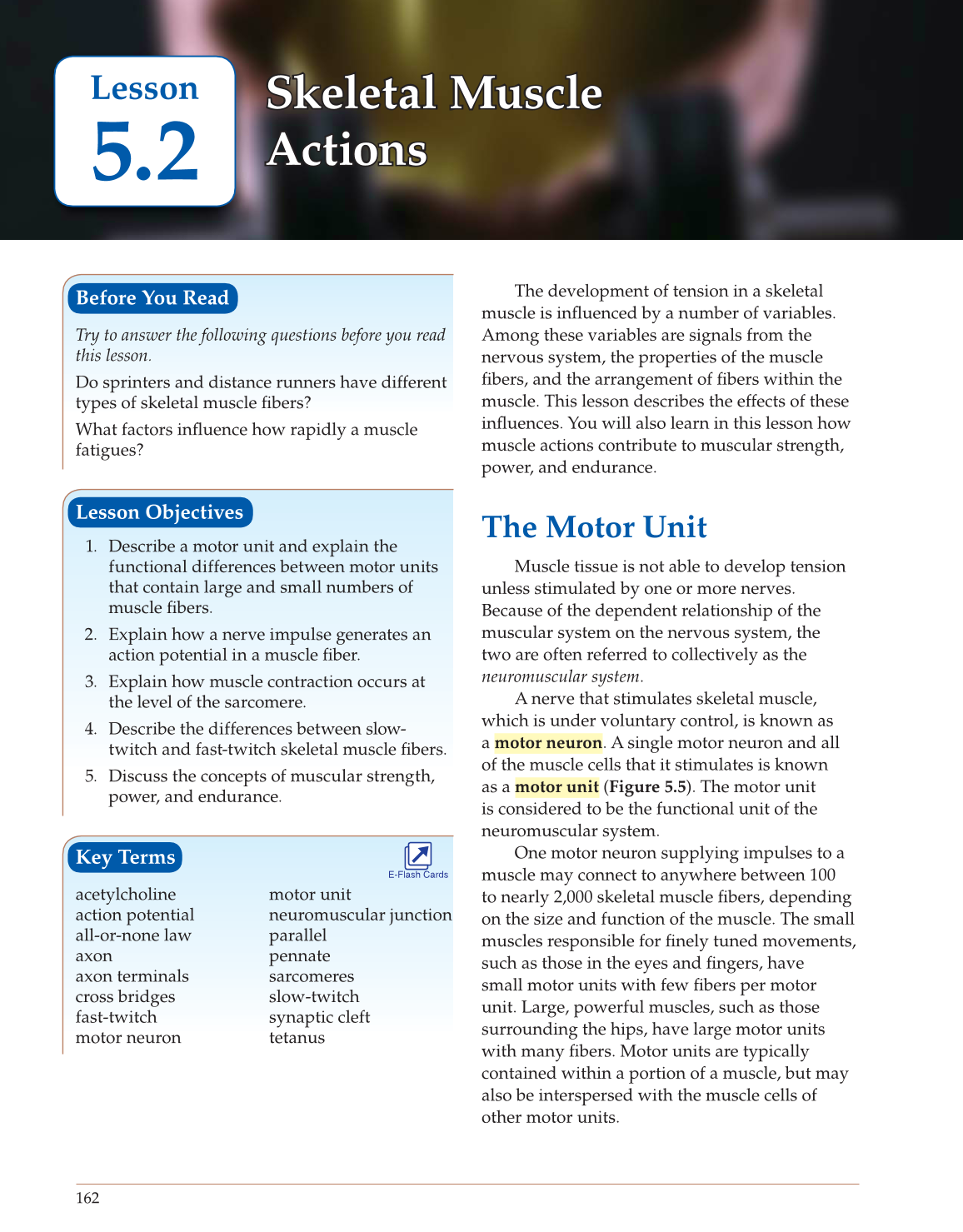162
Lesson
The development of tension in a skeletal
muscle is infl uenced by a number of variables.
Among these variables are signals from the
nervous system, the properties of the muscle
fi bers, and the arrangement of fi bers within the
muscle. This lesson describes the effects of these
infl uences. You will also learn in this lesson how
muscle actions contribute to muscular strength,
power, and endurance.
The Motor Unit
Muscle tissue is not able to develop tension
unless stimulated by one or more nerves.
Because of the dependent relationship of the
muscular system on the nervous system, the
two are often referred to collectively as the
neuromuscular system.
A nerve that stimulates skeletal muscle,
which is under voluntary control, is known as
a motor neuron. A single motor neuron and all
of the muscle cells that it stimulates is known
as a motor unit (Figure 5.5). The motor unit
is considered to be the functional unit of the
neuromuscular system.
One motor neuron supplying impulses to a
muscle may connect to anywhere between 100
to nearly 2,000 skeletal muscle fi bers, depending
on the size and function of the muscle. The small
muscles responsible for fi nely tuned movements,
such as those in the eyes and fi ngers, have
small motor units with few fi bers per motor
unit. Large, powerful muscles, such as those
surrounding the hips, have large motor units
with many fi bers. Motor units are typically
contained within a portion of a muscle, but may
also be interspersed with the muscle cells of
other motor units.
5.2
Skeletal MuscleMuscle Skeletal
Actions Actions
Before You Read
Try to answer the following questions before you read
this lesson.
Do sprinters and distance runners have different
types of skeletal muscle fi bers?
What factors infl uence how rapidly a muscle
fatigues?
Lesson Objectives
1. Describe a motor unit and explain the
functional differences between motor units
that contain large and small numbers of
muscle fi bers.
2. Explain how a nerve impulse generates an
action potential in a muscle fi ber.
3. Explain how muscle contraction occurs at
the level of the sarcomere.
4. Describe the differences between slow-
twitch and fast-twitch skeletal muscle fi bers.
5. Discuss the concepts of muscular strength,
power, and endurance.
Key Terms
acetylcholine
action potential
all-or-none law
axon
axon terminals
cross bridges
fast-twitch
motor neuron
motor unit
neuromuscular junction
parallel
pennate
sarcomeres
slow-twitch
synaptic cleft
tetanus
E-Flash Cards
